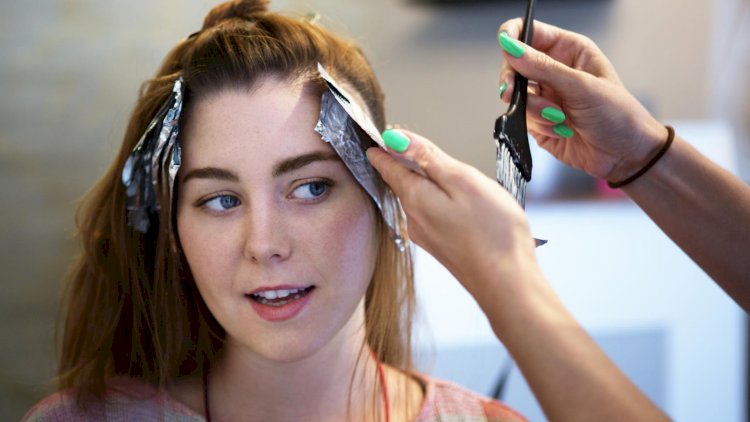Why Are The Hair Dye Allergies On The Rise?
The incidence of allergies increases as more teens use hair colour. When you want your favourite shade, use safe products. Stay away from allergies

Hair Dye Allergies
Very much yesterday are tattoos and body piercings. Hair that screams in shocking colours like Napalm Orange, Atomic Pink, and Electric Blue is the hottest fashion trend among teens these days.
Even the most permanent dye job isn’t as permanent as a tattoo, or a pierced lip or tongue as some parents may breathe a sigh of relief.
The incidence of hair dye allergies is also increasing warns a group of European dermatologists as more and more young people to colour their hair.
Called para-phenylenediamine, or PPD, the culprit is a common chemical ingredient in permanent hair dyes. Including many of the top-selling brands, the researchers say PPD is found in more than two-thirds of commercial dyes.
Which often require treatment and can thereby lead to hospitalisation, occasionally patients with severe PPD reactions commonly develop painful rashes around the hairline or on the face. Also common is facial swelling.
Many Don’t Seek Treatment
According to dermatologist John P. McFadden, in his own London clinic, over the past six years, he saw a doubling of PPD reactions.
In an editorial published in the Feb. 3 issue of BMJ, McFadden and colleagues thereafter write that the frequency of positive reactions to PPD on patch testing is increasing as dermatologists report anecdotally.
Reporting on eight cases of severe hair dye reactions among teens between the ages of 12 and 15 is the editorial co-author Heidi Sosted of the University of Copenhagen.
As one reportedly ended up in intensive care, reactions were so serious that five of the teens had to be hospitalised.
In a sample of 4000 adults living in Denmark, Sosted and colleagues examined the frequency of hair dye reactions in an earlier study.
Slightly over 5% said they had experienced allergic reactions to them whereas a total of 18% of the men and 75% of the women said they had used hair dyes. Whereas it is observed that reportedly seeking medical treatment was only 15% of those who had allergic reactions.
McFadden, Sosted as well as colleagues, therefore, writes in the BMJ editorial that amongst medical and scientific communities, the public, and legislators, wider debate on the safety and composition of hair dyes is overdue.
Putting people at risk and increasing the burden on health services is cultural and commercial pressures to dye hair and perhaps the widespread obsession with the culture of youth.
Hair Dyes 'Thoroughly Studied'
The Cosmetics, Toiletry, and Fragrance Association is therefore countering that hair dye comes among the most thoroughly studied of consumer products as well as safety tests on the individual ingredients making up hair dyes that are continually updated in a statement issued in response to the editorial.
CTFA officials thereby write that hair dyes can cause skin allergic reactions in some individuals just like many other products in common use such as certain foods or drugs. Many hours after hair dye use and resembling other contact-allergy reactions like nickel, poison ivy, etc., the number of consumers allergic to hair dyes is very small and here all of these reactions occur thereby at the site of contact.
By conducting a skin-sensitivity test 48 hours before colouring the hair, first-time users can greatly reduce the risk of allergic reactions.
The CTFA statement notes that on the hair colouring packages, are the necessary warnings and instructions for skin testing. They can and they should avoid the use of all permanent hair dyes and consult a physician before any further use if a consumer is positively identified as allergic to a hair dye ingredient.
What Should You Do?
Always test before you settle for a permanent dye. It will help identify whether your skin is allergic or not. So, for now, you can settle on the dye that contains safe ingredients that come to be safe on the skin. No matter how safe you are, there is always a possibility of reactions that are due to the use of hair dyes.
Your dermatologist can help you with identifying your best dye product when they choose the product safe for sensitive skin. What you need is one safe product that successfully passes the patch test and thereby gives you a safe experience.
The Final Words Before Winding Up…
You need to learn more about the harmful ingredients so that you won’t have an allergic reaction. As we continue our research there are more safe products out there. So stay tuned.
What's Your Reaction?





















